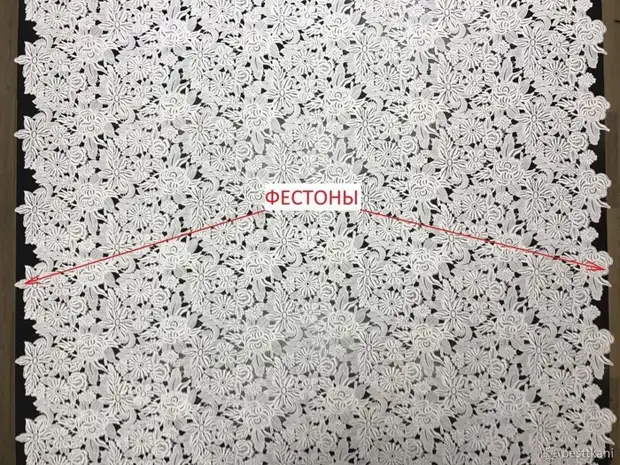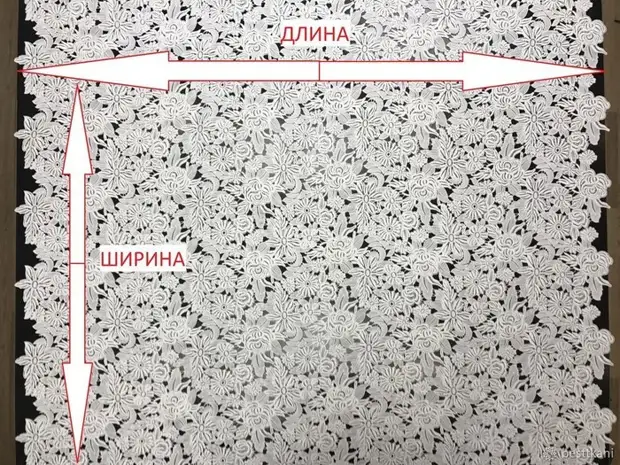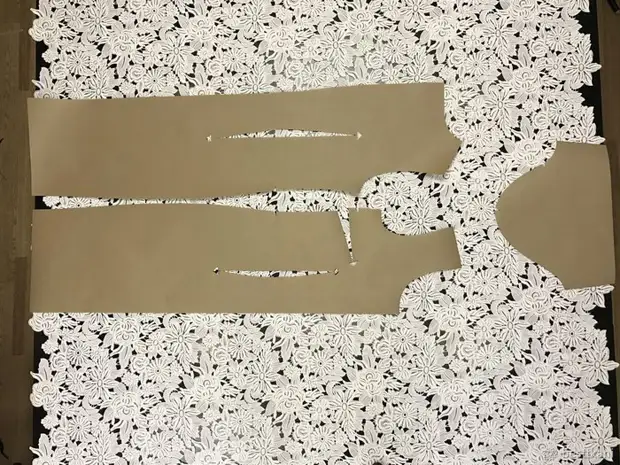Immediately make a reservation that the work is written for beginner masters, I deliberately did not go into the debris of the classification of lace fabrics, who needs it and can find many materials, and beginners should not be distracted from the main thing.
So, to business. Many seems to create beautiful evening and casual outfits, only professionals can only be underwear. But in fact, working with him is not so complicated. Today I will tell you about what to pay attention to when choosing a lace and how to cut it right.
1. Availability of Festoon
Festos are beautifully treated edges (if you carry out an analogy with a cloth). They are usually allowed on the bottom of the product, sleeves, neck. It is desirable that the Festos be on both sides. This is an excellent opportunity to save, because the consumption of lace with the crop decreases. The size and height of the festoons depend on the designer's plan. This affects the flow rate, as Festos must be combined on the seams (preferably and in height, and in the figure). Please note: Festos can be different in drawing, which also affects consumption.

2. Width of Lace
When selling indicate the width of the lace, but with a string - this is the length of the product. As a result, the wider, the better, since a long dress or long sleeves can be sewed from a wide web.

3. Embroidery quality
Both with the front side and from the wrong side. We pay attention literally to everything! On high-quality lace, all embroidery elements are the same, neat and small - it concerns sequins, beads and of course rhinestones. Nothing flock, not diverge! No nodules and sticking threads! On high-quality lace, the outbreak is beautiful and neat.4. Direction of Figure
In the lace, the drawing can go one way and from the middle to the festons, and can also be uniform (it affects the flow).
Cutting lace
If we cut products from the fabric, the length of the product is parallel to the edge. When working with lace, the opposite is a feston (edge) goes on the bottom of the product, the sleeve. Remember that on the lace everything is calculated by the width of the product (according to OB or OG + increases for freedom of movement + pulp for processing), and not in length. This is a big plus, since it is not necessary to handle the lower parts of the product. But there is a minor minus - it is necessary to immediately decide on the length. My advice: Make a pre-layout to make sure that this model suits you. So you can immediately decide on the length. Only after that begin to cut. On the fitting, make changes only into volumes. Preparation for opening a new and pure lace canvas can not be sewed before sewing, it will be enough to decide it. If it is necessary to work with lace, which is 100% of natural fibers, then it is necessary to gently wash manually in cold water. Ironing the delicate material is desirable through a wet fabric or at the minimum temperature on the silence mode from the wrong side.How to cut a lace cloth and lace
On a lace canvase or lace with a large asymmetric pattern, laying out the patterns on the turn, and on fine tissue with small - folded twice.

The layout of parts is carried out depending on the direction of the pattern. It is important to observe the drawing on symmetric and paired parts. Pay attention to the fact that openwork fragments are located symmetrically relative to the middle of the handle and the back, on the sleeves - symmetrically relative to the middle of the transfer. The layout must be done in such a way that the drawing is combined in the connecting seams.
As you can see, nothing complicated in it. Choose fabrics in the shower and go outfits on any occasions.
